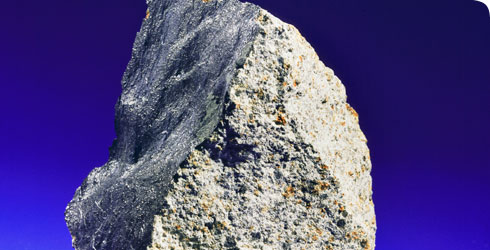Meteor impacts
FAQs
What is a meteor impact?
A meteor impact takes place when a fragment of an extraterrestrial object, such as an asteroid, hits Earth. An asteroid is the left-over debris from the formation of the planets.
In space, these fragments are sometimes called meteoroids. They become meteors, or shooting stars, when they pass through Earth’s atmosphere, and the fragment that lands on Earth is called a meteorite.
The force of an impact depends on size. Smaller meteors are slowed by Earth’s atmosphere and fall to Earth under the force of gravity without making craters.
Impacts and craters
Impact craters are formed when meteors are too large to be slowed by the atmosphere and strike the Earth’s surface at high velocity (12-20km per second).
Impacts on Earth tend to make 1 of 2 types of crater. Simple craters are bowl-shaped. Complex craters are bowl-shaped with a raised central peak and terraced rim, appearing as a ring-shaped feature when looked at from above.
Barringer Crater in Arizona is an example of a simple crater. It has a diameter of 1.2km and was formed by a meteor between 30 and 50m in diameter.
Are they more destructive on land or in water?
Impacts on both land and water have the potential to be very destructive.
The power of a meteor hitting the water can unleash a tidal wave. It can also turn sea water and some oceanic sediments into vapour, releasing concentrations of gases into the atmosphere that can be harmful.
On land, even a small impact can be devastating if it takes place in an area where people live, and as urban areas expand, this becomes more likely.
Large impacts may have global consequences.
What was the largest meteor to hit Earth?
There is a huge crater in South Africa, called the Vredeford Dome. This is very ancient and not very well preserved, but it is the biggest crater we know of. It measures roughly 300km across. The impact from this meteor would have been enormous.
How often do major events like this occur?
Scientists predict that a meteor around 30-50m across, capable of forming a 1km crater, will occur around every 1,000 years. However, the last impact of this size that we know of took place 55,000 years ago. This is why people sometimes say we are overdue for a big impact.
Small but potentially devastating events such as the 1908 Tunguska impact in Russia are likely to occur every few hundred years.
Is there any warning?
There should be plenty of warning about potential impacts, as global observation networks are keeping constant vigil over the skies. Any sign of activity is quickly reported.
What are the chances of one hitting us? Are we prepared?
The chances are that a large meteorite will hit Earth again eventually as there is a lot of asteroid activity in our solar system. Other planets haven’t escaped impacts, so why should Earth?
Scientists have proposed plenty of strategies to deflect or destroy Earth-bound asteroids. However, the possibilities depend on the size of the asteroid.
Where are they most likely to hit?
As the surface of Earth is mostly covered in water, meteors are most likely to hit our oceans. However, the flight paths of meteors are random, so there is no specific point on Earth that is more likely to be hit than any other.
Can we learn anything from meteorites?
Yes. We can learn how craters are formed and how rocks and minerals are transformed during high energy processes. We can also learn about the environmental effects of impacts, and the way they have influenced our evolutionary history.
Toolbox

Until 1938 whale carcasses were buried in the Museum grounds so that their flesh would decay leaving only the skeletons.
